Also known as Mexican bush sage, this salvia produces great fall color (purple and white) that attracts hummingbirds, bees, and butterflies.
It looks great mixed in with other flowers for interesting color combinations, or planted in a bunch to create a nice edge or border.
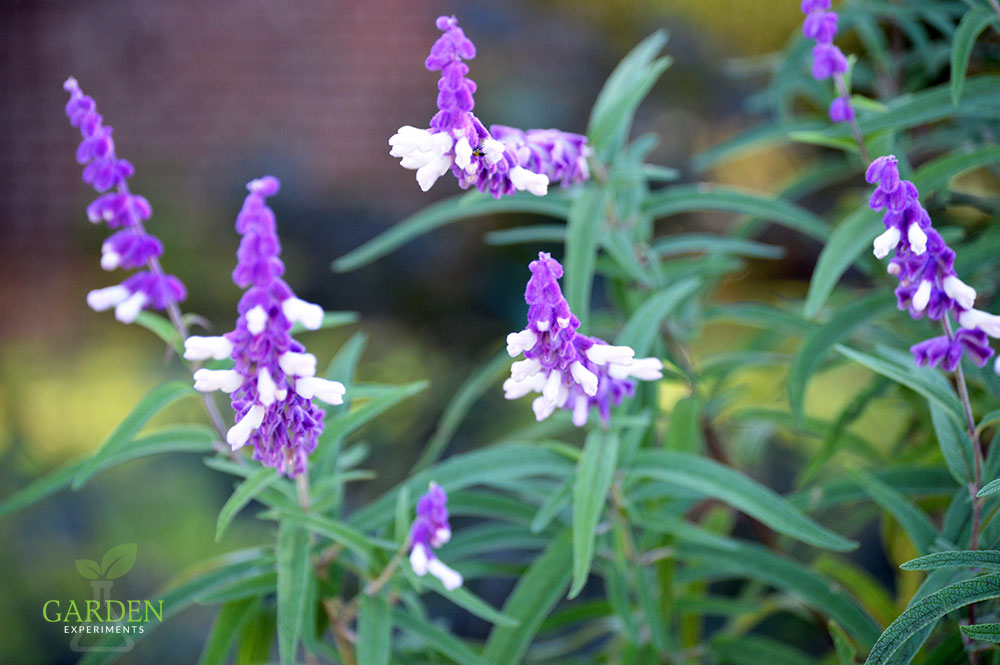
How to Grow Mexican Salvia
This plant thrives in full sun but will tolerate some afternoon shade. It gets to be about 3-4 feet tall and just about as wide, so give it plenty of room when you plant it. It can tolerate various soils, from sand to clay, but it will not take its roots in water for too long. It does, however, tolerate brief periods of drought.
About Mexican Sage
Mexican salvia (Salvia leucantha) is just a cool plant; its flowers are fuzzy or wooly looking. It’s hardy in zones 7 through 11 and in places where it doesn’t frost, this plant will be evergreen (down to about 25 degrees F).
It is native to Mexico and Central America but is used throughout the United States in gardens and container plantings.
Here are some of its features
- drought tolerant
- flowers in late summer through fall
- deer resistant (the voracious deer in my yard haven’t even touched it)
- hardy
- perennial
- attracts bees, hummingbirds, butterflies
- adds nice fall color when everything else is slowing down
To increase bloom time and keep the plant from drooping, you can deadhead. You will need to cut back the dead growth in early spring to provide room for new growth.
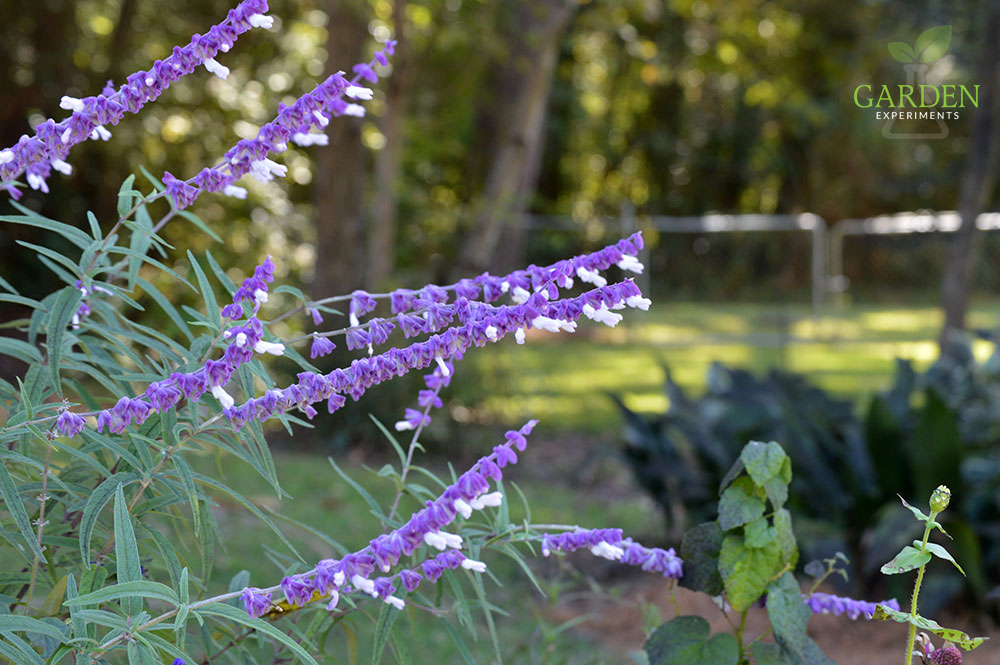
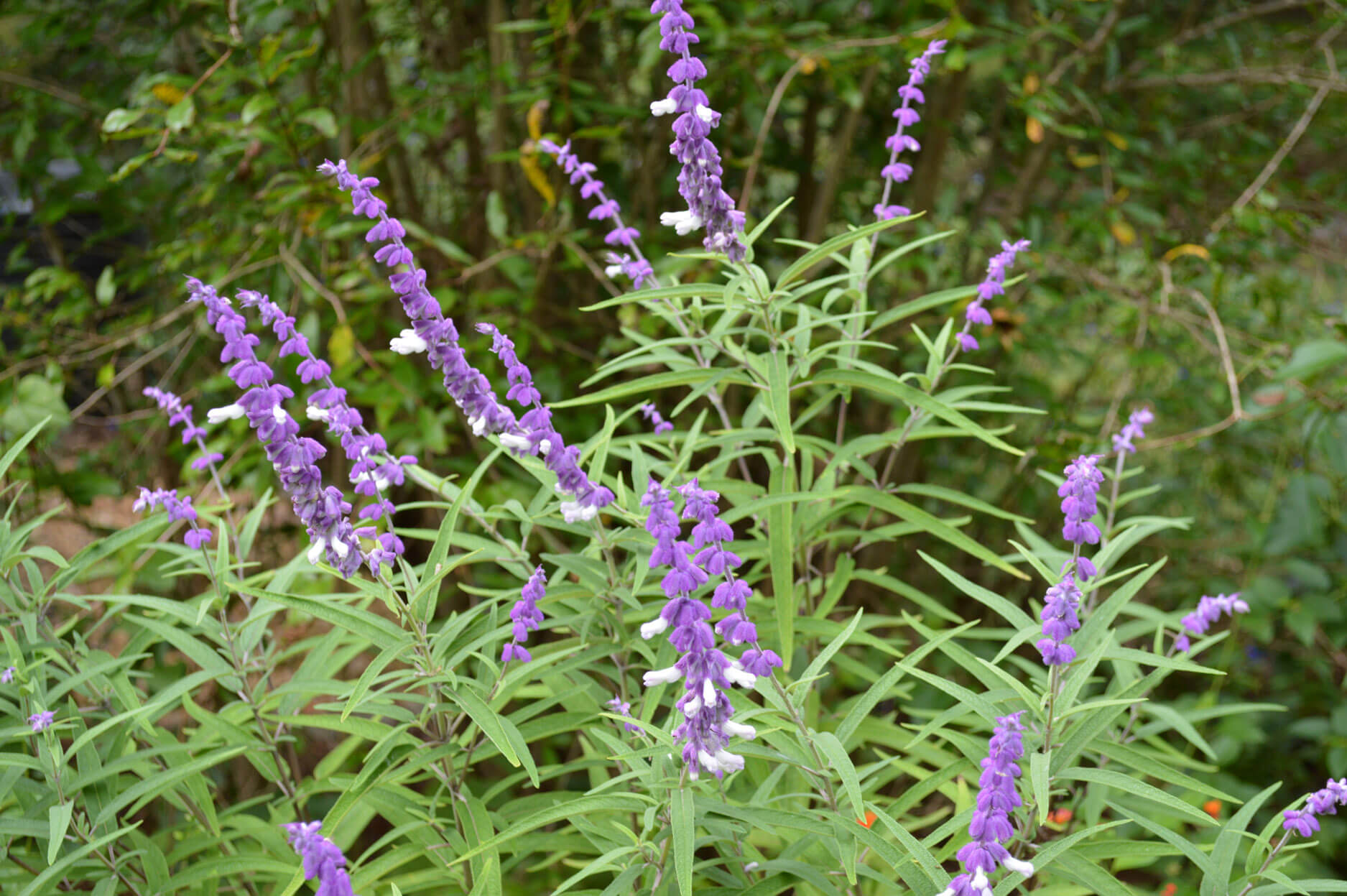
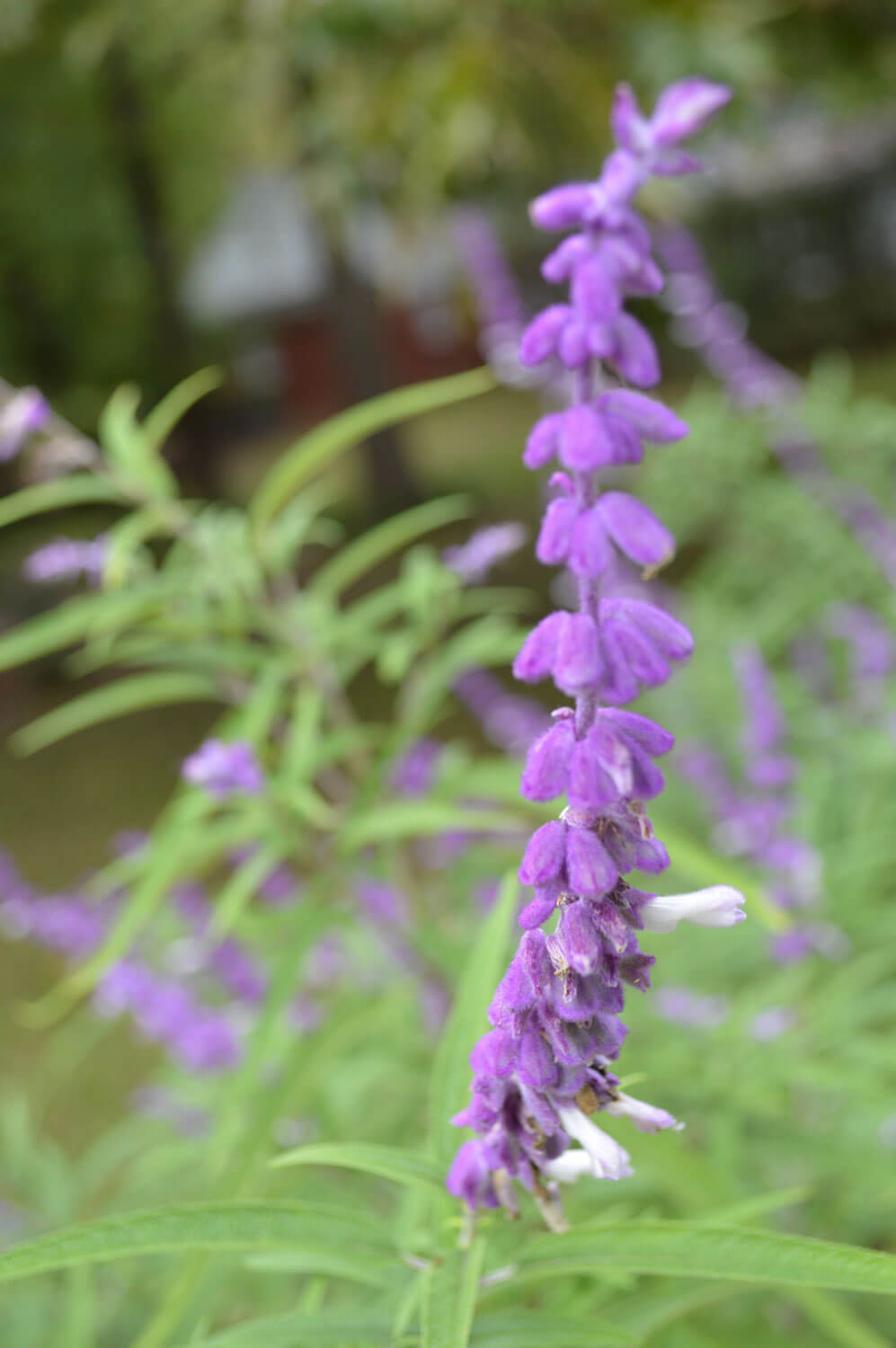
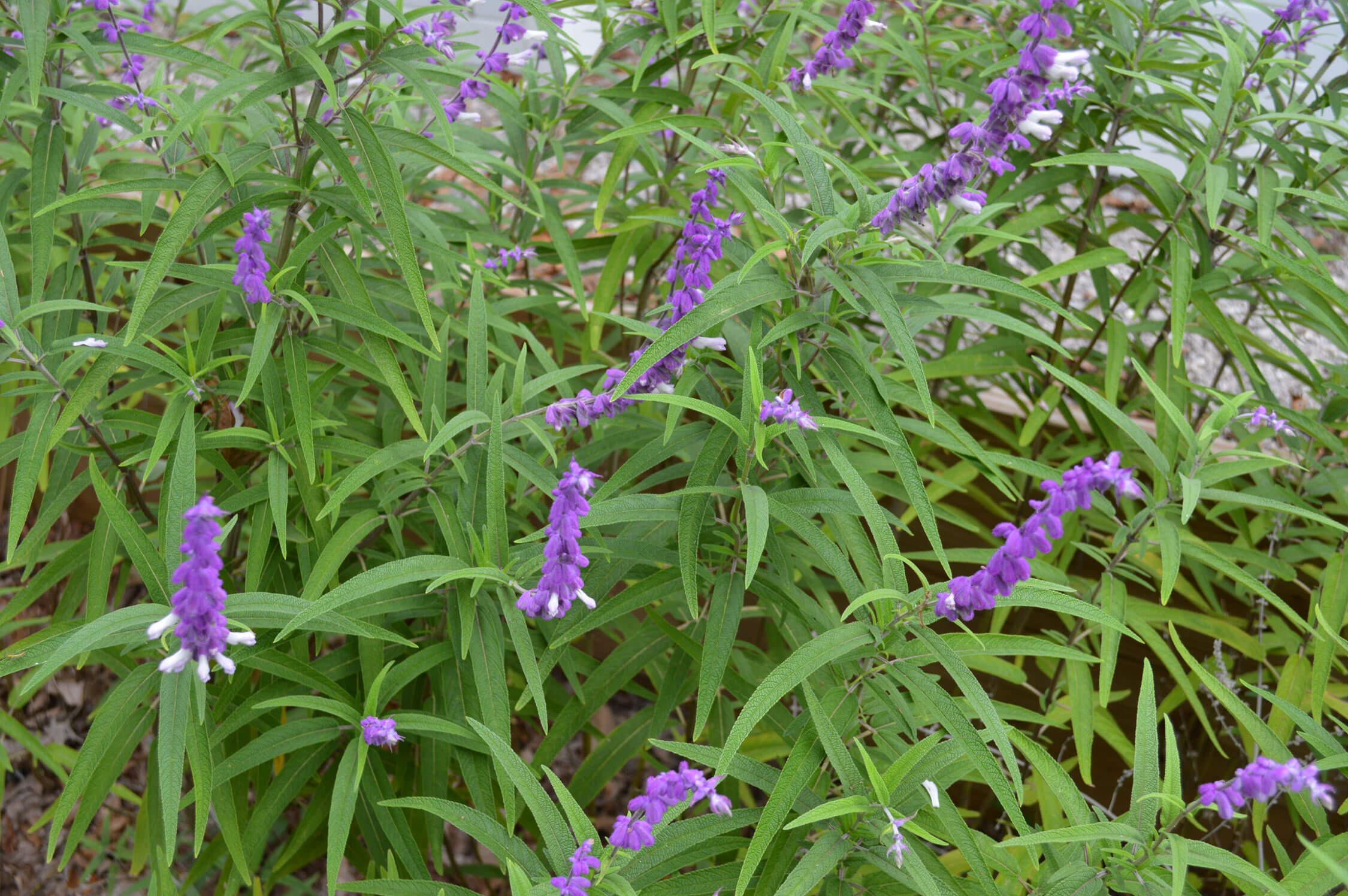
Good Color Combinations
I really like this plant in a border or edge but it also mixes really well with reds and oranges, providing a nice contrast. The fuzziness of the flowers also add a bit of textural interest.
Try pairing it with hot lips salvia – another great fall-blooming plant. Hot lips salvia (Salvia microphylla) has tiny red and white flowers that contrast well with the purple of Mexican salvia.
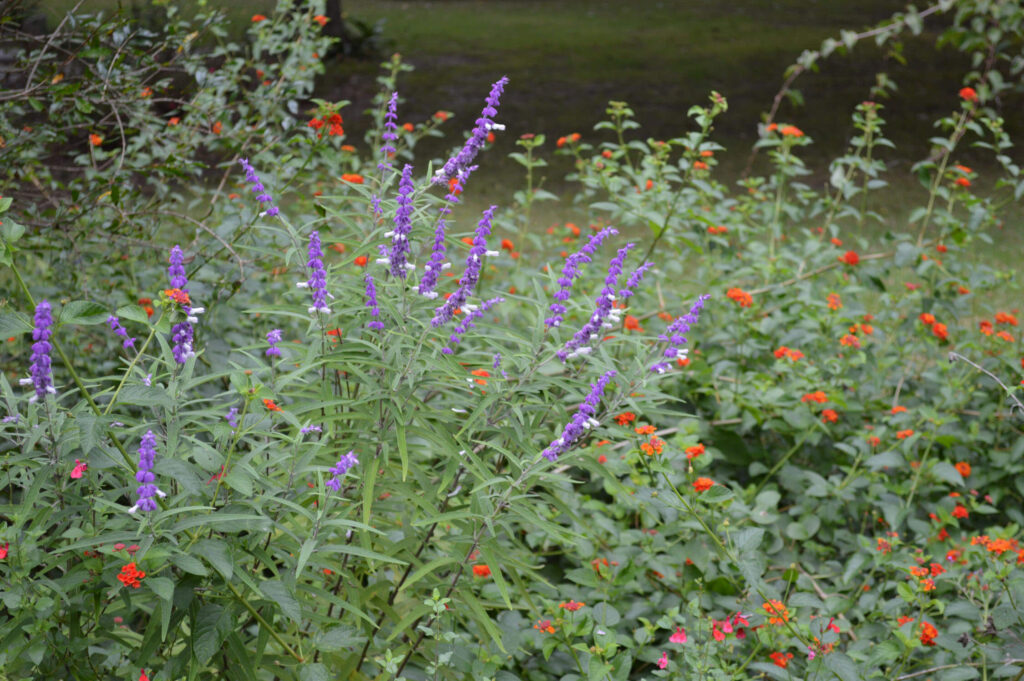
Propagation
This plant can propagate from cuttings and seeds. When taking cuttings, use younger, greener stems for better results. You can also bury some of the attached stems into the top few inches of soil and it will grow roots.
More info
Visit this link for more information about Mexican bush sage: http://edis.ifas.ufl.edu/fp527v
